Universal
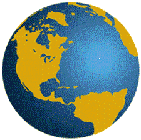 Language ©
Language ©
The world needs a universal language.
"One picture is worth a thousand words."
A picture can convey the same meaning in different languages.
Picture language is universal language.
Picture language is visual language.

 The world needs a universal language. That is not to say that everyone should speak the same language. That isn't possible or desirable in this world at this time. The world needs a universal language through which people of different cultures can communicate regardless of what languages they speak. We need a universal language whereby a farmer from New Guinea can contact an American university over the Internet and get help with problems that are plaguing his crops -- and do so without having to learn English! That is universal language. Visual language, picture language, can fill that need.
The world needs a universal language. That is not to say that everyone should speak the same language. That isn't possible or desirable in this world at this time. The world needs a universal language through which people of different cultures can communicate regardless of what languages they speak. We need a universal language whereby a farmer from New Guinea can contact an American university over the Internet and get help with problems that are plaguing his crops -- and do so without having to learn English! That is universal language. Visual language, picture language, can fill that need.
According to conventional language theory, our languages are collections of sounds that evolved into languages in pre-historical times. According to the "phonetic" theory of the alphabet, our Roman alphabet is a set of abstract phonetic symbols that have no meanings other than serving as symbols for sounds. By those definitions, our language is a collection of arbitrary sounds that we write in meaningless symbols. That isn't true.
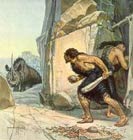 Conventional language theory is partly correct. Some words and structural parts of our languages remain in use from primitive times. Our ancestors domesticated wild plants, wild animals, wild men, and wild languages that had evolved "naturally" from earlier times. That was way back at the dawn of civilization. Those original wild languages didn't simply evolve into modern languages by chance. The well structured languages that we use in this world today are man-made, woman-made, structures.
Conventional language theory is partly correct. Some words and structural parts of our languages remain in use from primitive times. Our ancestors domesticated wild plants, wild animals, wild men, and wild languages that had evolved "naturally" from earlier times. That was way back at the dawn of civilization. Those original wild languages didn't simply evolve into modern languages by chance. The well structured languages that we use in this world today are man-made, woman-made, structures.
 A typical house of today is constructed partly of natural materials and partly of manufactured products. Our languages are constructed partly of natural linguistic elements and partly of fabricated words. Sawed lumber, iron nails, glass windows, brass door knobs, and other products of human manufacture are typical building materials for houses and other structures. Forests that provide lumber evolved out of the ecosystem of the planet. The iron for the nails was forged in the core of a collapsing star long ago. Those are natural materials. However, a house of sawed lumber and iron nails doesn't simply "evolve" out of a forest or out of the cosmos by chance. It is a man-made structure. Our languages are like that. They are composed of naturally occurring linguistic elements that are the sounds a human throat can make, but they didn't evolve by chance. They are products of human fabrication.
A typical house of today is constructed partly of natural materials and partly of manufactured products. Our languages are constructed partly of natural linguistic elements and partly of fabricated words. Sawed lumber, iron nails, glass windows, brass door knobs, and other products of human manufacture are typical building materials for houses and other structures. Forests that provide lumber evolved out of the ecosystem of the planet. The iron for the nails was forged in the core of a collapsing star long ago. Those are natural materials. However, a house of sawed lumber and iron nails doesn't simply "evolve" out of a forest or out of the cosmos by chance. It is a man-made structure. Our languages are like that. They are composed of naturally occurring linguistic elements that are the sounds a human throat can make, but they didn't evolve by chance. They are products of human fabrication.

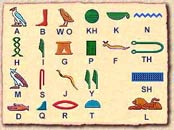
If Christian monks had invented alphabets, we would expect the symbols of the alphabet to be Christian symbols. Pagan monks invented the alphabets we use. Our alphabet is a set of Pagan religious symbols. Scribes of the Thoth school organized and codified the major languages we speak today and created the writing systems we use to write them. Our languages are not collections of arbitrary sounds that we write in meaningless symbols.
Our Roman alphabet is a hieroglyphic 'picture' alphabet related to Egyptian hieroglyphics (but not derived FROM Egyptian hieroglyphics). Many words are picture-words composed of pictures that are letters of the alphabet. Our language is visual language. Our language is a work of art written in pictures. (That is only partly true. Some of our language is "visual language," some of it is phonetic.)
The word Man is a sample of visual language in English.
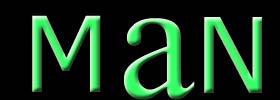 The word Man is a picture word composed of letters of the alphabet that are pictures.
The word Man is a picture word composed of letters of the alphabet that are pictures.
 The word Man is composed of letters that represent Mother + Birth/Life + Son.
The word Man is composed of letters that represent Mother + Birth/Life + Son.
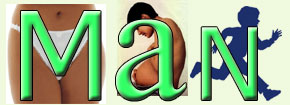 The word Man pictures a mother giving birth to a son. Hence, the word Man in visual language is not exclusively the masculine gender noun that it is in phonetic language. The word Man began as a generic term for the bi-sexual species, Man. The generic term Man became used as a masculine noun only after the annihilation of Mother Goddess Pagan religion.
The word Man pictures a mother giving birth to a son. Hence, the word Man in visual language is not exclusively the masculine gender noun that it is in phonetic language. The word Man began as a generic term for the bi-sexual species, Man. The generic term Man became used as a masculine noun only after the annihilation of Mother Goddess Pagan religion.
(Follow these links to the Alphabet Pages M . . . A . . . N on this website. These fully illustrated pages discuss the pictographic origins of the Roman alphabet and the meanings of the letters.)
The world needs a universal language.
We cannot wait for evolution to evolve one.
The seeds of a universal language are embedded in the languages we already use.
We don't have time to wait for a universal language to evolve out of the conflicting cultures and political affairs of this world. That would take centuries of crushing wars and conquests. We cannot wait for evolution to evolve a universal language, nor can we create a universal language based on the erroneous assumption that the languages we use are products of blind evolution. In order to create a universal language, we need to understand the true origins and true nature of the languages we already use.
Universal language needs universal culture.
Language is culture. Language derives its meaning from culture. Every culture is embodied in the language it speaks. Every language is rooted in the culture that speaks it. A universal language would require a universal culture. Mother Goddess Pagan religion defined the culture of the early literate civilizations. Mother Goddess Pagan religion was the nearest thing to a universal culture this world has ever known. Languages and cultures of nations and tribes all over the world are rooted in Mother Goddess Pagan religion. The seeds of a universal culture and universal language are already embedded in the cultures and languages we now have. In order to create a universal language for our use in this world today, we must return to our roots in Pagan culture and build upon the foundations that are already in place.
Resurrect Isis. Our true origins are not to be found in Biblical fiction nor in 'scientific' blind evolution. Isis was the universal Mother Goddess. Mother Goddess Pagan religion of the Isis bloodline was the nearest thing to a universal culture this world has ever known. Mother Goddess Pagan religion is the cultural source of the literate civilizations that exist on this planet today. The art of writing dispersed throughout the world with the Genesis of Isis. In order to build a WorldCulture civilization for the future, and to provide a universal language to serve that civilization, we must return to our Pagan roots.
Addendum
(Copied from the
Visual Language page.)
 Language is culture. Religion is culture. Pagan religion defined the culture and refined the languages of the early civilizations. Languages and cultures of diverse nations and tribes all over the world are rooted in Pagan religion. In the old Pagan religion, Thoth was the god of wisdom and learning. Thoth was the "scribe of the gods." "Thoth was the inventor of writing and of numbers." "It was Thoth who first taught men to speak clearly."
Language is culture. Religion is culture. Pagan religion defined the culture and refined the languages of the early civilizations. Languages and cultures of diverse nations and tribes all over the world are rooted in Pagan religion. In the old Pagan religion, Thoth was the god of wisdom and learning. Thoth was the "scribe of the gods." "Thoth was the inventor of writing and of numbers." "It was Thoth who first taught men to speak clearly."
Scribes of the Thoth school were the educated priesthood and government administrators of kingdoms that included many tribes and languages. Scribes of the Thoth school modified and codified the natural languages of those many tribes. Pagan religion added concepts to those cultures and words to their languages that the original cultures and languages didn't have. Those original wild languages were limited mediums of thought and expression. Pagan religion made great advances in the mental development of people and in the power of their languages.
Large parts of our modern languages did not "evolve" from primitive times. Scribes of the Thoth school created them within the historical era. One method the Thoth school used to create language was to use the names of gods to create words and give them meaning. For instance, Thoth was the god of wisdom and learning. Our word thought is derived from the name of Thoth, the god of wisdom and learning.
Throughout Pagan literature, Thoth is acclaimed as the "inventor of writing and of numbers." Alphabetic writing is a creation of the Thoth school. The Roman alphabet is a set of Pagan religious icons that are derived from the legend of Isis and Assur. Our alphabet is pictographic.
The letters of the alphabet are all pictures. Our alphabet contains fifty-two pictures. Every letter, large and small, is a distinct picture having a meaning of its own. Letters that are pictures can combine to form words that are pictures of their meanings. That is visual language.
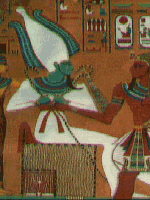 According to the Pagan foundation legend, Assur was the legendary founding king of the first kingdom on earth. He was the ancestral father of the Pagans and the original God of the old Pagan religion. Isis resurrected Assur from the dead. The resurrection of Assur was the beginning of the Pagan religion. Thoth was the friend and advisor of Isis and Assur.
According to the Pagan foundation legend, Assur was the legendary founding king of the first kingdom on earth. He was the ancestral father of the Pagans and the original God of the old Pagan religion. Isis resurrected Assur from the dead. The resurrection of Assur was the beginning of the Pagan religion. Thoth was the friend and advisor of Isis and Assur.
In the beginning, Assur cleared jungles, drained swamps and dug canals. He cleared the land of poisonous reptiles, noxious weeds and stinging insects. He discovered which plants were fit for food and which were good for medicine. He established the first government, made laws, and abolished cannibalism. He taught men to worship the gods, and "he gave names to things which formerly had none."
After he had raised his own people up from ignorance and savagery, he went about teaching the arts of civilization to the rest of the world. While Assur was on his missionary trips abroad, he left his kingdom in the hands of his faithful wife, Isis. Upon returning home from one of his missionary tours, the evil god Seth, and a company of conspirators murdered Assur. They hacked his body into pieces and scattered his severed parts afar.
Isis gathered together Assur's scattered parts. Using a combination of magic, medicine, and "words of power" she learned from Thoth, Isis resurrected Assur from the dead. Their son, Heru, the hawk god, was born from the union of Isis with her resurrected king. Their descendants went on to found the Egyptian empire and the Pagan religion.
Heru went on to become the progenitor of the royal line of Pharaohs. Isis went on to become the EarthMother Goddess. Assur went on to become the king of the afterlife and judge of the dead. Assur's severed parts went on to become letters of our alphabet. The G is his head; the O is his eye; the J is his beard, and so on. The Pagan religious icons that are letters of the alphabet, and the stories related to them, contain the seeds of universal culture and universal language.
|
Reader responses are invited. |
Return to Home Page . . . Return to Table of Contents Hub
Links to related alphabet pages:
Alphabet Source Illustrations . . . A . . . M . . . NLinks to related topic pages:
Visual Language . . . Tower of Babel . . . Babel of Tongues . . . Sunwing . . . The Genesis of Isis